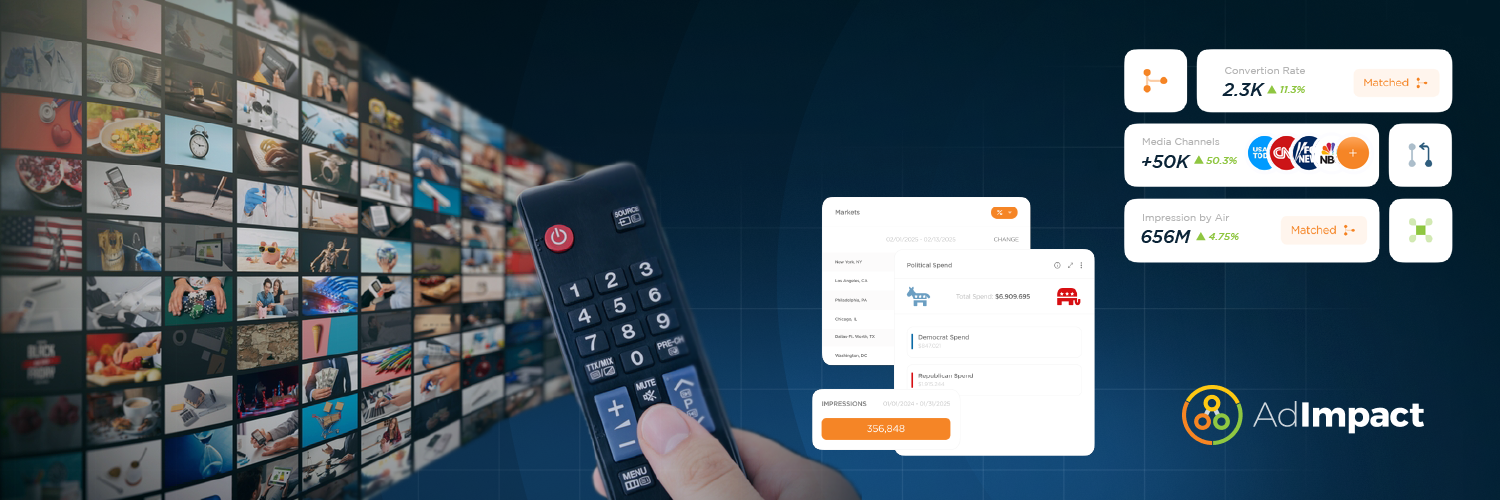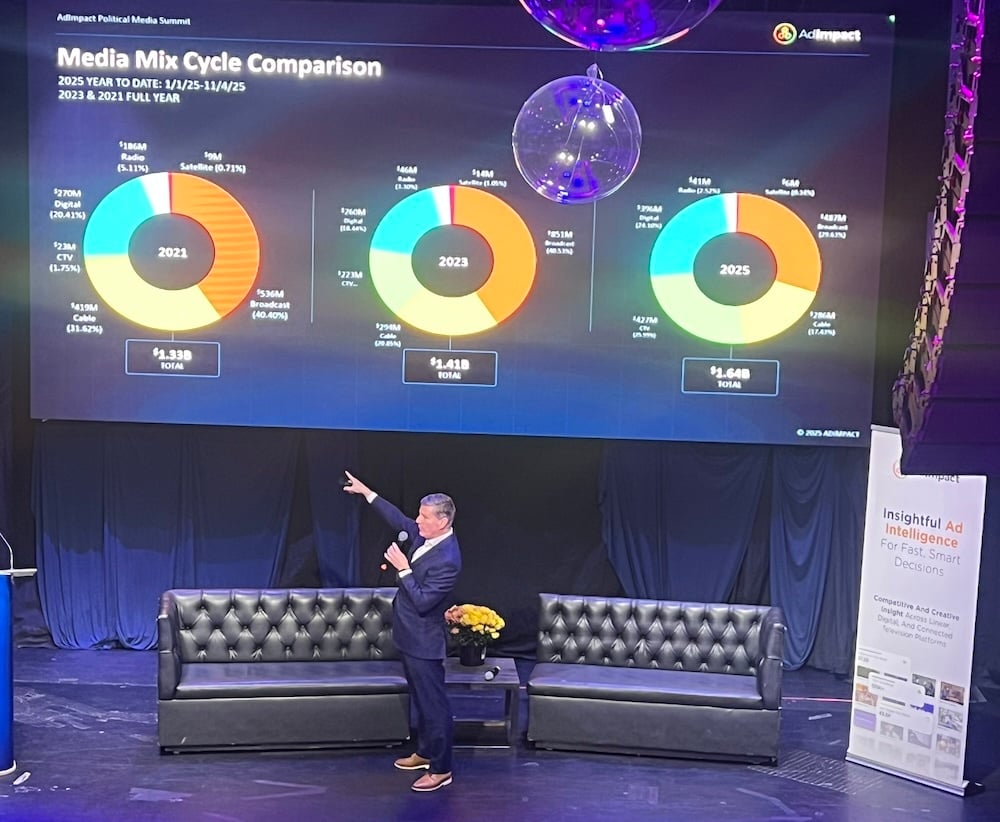Written by Timothy Dias
It was once common to hear that Labor Day marked the kickoff of Presidential elections. While outdated for a few cycles now, this summer’s events prove that come Labor Day, Presidential races are already in full swing. While this summer’s Presidential activity dismisses this adage, it is nonetheless valuable to take Labor Day as a dividing line, kickoff or not, in looking at ad spending across all races. This blog will dive into future reservations for political advertisements set to air in the critical period between Labor Day and Election Day.

Nearly $1.8 billion has already been reserved to run after Labor Day across the United States through Election Day. Of that total, Senate spending leads all other offices with $603M in reservations. House spending follows with $458M in reservations, while the Presidential election has $401M. Issue spending, which includes dozens of major state level ballot initiatives, makes up $231M of future reservations. Pennsylvania leads all states with $305M in reservations after Labor Day. Ohio, Michigan, California and Arizona round out the top five most expensive states. The top markets are Philadelphia ($127.4M), Las Vegas ($107.6M), Phoenix ($107.5M), Los Angeles ($84.6M), and Detroit ($81.6M). Overall, Democratic advertisers have eclipsed the $1B mark in post-Labor Day reservations, 41% higher than the $587.9M Republicans have reserved.

Presidential
The $401.5M of Presidential reservations is almost entirely focused on seven key battleground states. Within these seven states, Pennsylvania dominates with $137.1M, seeing more than the next two leading states, Georgia ($67.4M) and Michigan ($61.1M), combined. Arizona ($39.7M), Wisconsin ($36.1M), North Carolina ($28.1M), and Nevada ($19.9M) are the other four tossup states, per Cook Political Report’s newly updated ratings. Pennsylvania boasts the highest reservations of any state, and by a large margin, thanks in part, to lower reservation totals by Republican advertisers in other states. Whereas Democratic groups have reserved $181.4M, including $136.6M outside of Pennsylvania, Republican groups have $59.4M, only $16.3M of which is outside of Pennsylvania. Neither MAGA Inc. nor the Trump campaign, have placed the wide-ranging reservations that the Harris campaign and its predominant Super PAC, FF PAC, have placed. For example, in Pennsylvania, MAGA Inc.’s $36M reserved is the second-highest total of any Presidential advertiser in any state, and yet this represents 81% of their total post-Labor Day reservations. Similarly, the Trump campaign has reserved $24.6M in Pennsylvania and another $25.9M in Georgia, but then only has $7.1M across the other five battleground states.
FF PAC has the greatest total reservations of all Presidential advertisers with $140.3M. These reservations are spread across all seven battleground states, plus smaller amounts in Nebraska, New Hampshire, Minnesota, and Maine. The Harris campaign has the second-largest fall reservation total, with $103.2M. On the Republican side, MAGA Inc. has $45.0M in post-Labor Day reservations and the Trump campaign has $57.5M. Overall, Democrats hold a significant advantage in Presidential reservations: $284.6M to $116.9M.
Senate
Much like Presidential spending, Senate spending is predominantly isolated to a few states. Ohio has the highest reservation total with $160.2M, a historically high spending Senate race, as we noted earlier this month. Pennsylvania and Montana are the next two highest, by significant margin, with $112.8M and $107.1M respectively. The highest spending Senate advertiser is WinSenate, a Democratic Super PAC that has $223M in post-Labor Day reservations. Their reservations are spread across the seven states Cook Political rates as Toss Up or Lean, with at least $16M reserved in each state. The highest reserving candidate is Ruben Gallego (D-AZ) with $18.3M. Elsewhere, Maryland, a Likely D state, has seen $7.8M in reservations, all supporting Republican candidate Larry Hogan. In Texas, $12.2M has been reserved, virtually all from Republicans. Republicans have more money reserved on ads in Texas than they do in battlegrounds Michigan and Wisconsin, and more in Maryland than they do Wisconsin.

Democrats are facing an uphill climb for control of the Senate, running against a historically challenging map. With 49 seats currently, Republicans are poised to pick up WV (Solid R rating), meaning they are on the precipice of a majority. This reality is reflected by which states Republicans are investing. 73% of all Republican Senate reservations are going to Montana, Ohio, or Pennsylvania. Winning just one of those seats all but assures Republicans the majority, barring disaster elsewhere on the map. Democrats, on the other hand, have spent more money across the board to defend a broader swath of incumbent seats. They’ve reserved more than Republicans in MT, OH, and PA, but it only represents 56% of their total Senate reservations.
House
Democrats lead Republicans $273.9M to $182.8M in reservations targeting House elections. The Democratic-affiliated group House Majority PAC leads all House advertisers with $169.6M in future reservations. The Republican-affiliated Congressional Leadership fund has $111.3M worth of House reservations. Both parties’ congressional campaign committees have the next highest totals, with the DCCC having $43.5M and the NRCC $30.8M in reservations. Twenty-five candidates have reserved more than $1M, with Curtis Hertel (MI-07), Yadira Caraveo (CO-08), and Susie Lee (NV-03) with the most reservations. Overall, the Los Angeles media market has seen the most House reservations with $47.5M, followed by New York with $44.1M, Portland, OR at $29.4M, Philadelphia at $21.7M, and Detroit with $20.2M.
Other
Ad reservations do not stop with these ‘big three’ federal office types. We’ve tracked $231M worth of issue reservations, primarily state ballot initiatives. Nevada’s ranked-choice voting prop has seen the highest total reservations with $26M, followed by three California initiatives, each seeing over $20M.
If you missed Part 1 of our 2024 Presidential Report, The Play for the White House, you can view that here.










